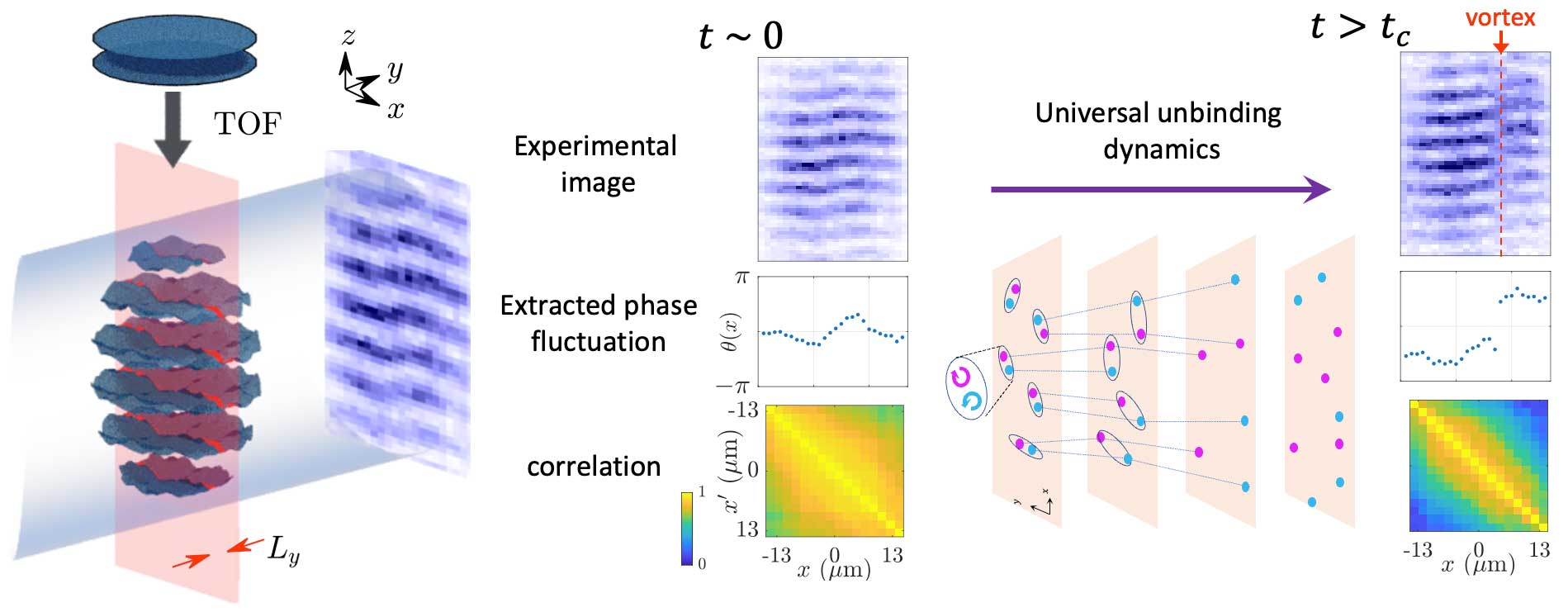Experimental physicists at the University of Oxford’s Department of Physics, along with theorists from the University of Hamburg, have made a new observation of vortex-antivortex unbinding dynamics. The group have made observations of the two-dimensional superheated superfluid that lived up to half a second providing them with an extended observation period to study the dynamics in great detail. Their results have been published in Science.
The emergence of order in many-body systems through the spontaneous breaking of symmetry is a very fundamental concept in condensed-matter physics. One powerful tool for comprehending these critical phenomena is the classification based on scaling properties, which unveils the scale invariant properties of systems near the transition point, akin to the mathematical concept of fractals.
Vortex dynamics in 2-D superfluids
The Berezinskii-Kosterlitz-Thouless (BKT) transition is a transition mechanism between normal fluid and a superfluid in two-dimensional systems instigated by vortex excitations, quantised circular whirlpools in the system. In two-dimensional superfluid at low temperature, tightly bound pairs of vortices with opposite circulation are excited. These vortex-antivortex pairs do not disrupt the superfluidity because the long-range effect on the phase of the wave function from one vortex is mostly screened by the equal and opposite effect of the other in the bound pair. Above the transition temperature, these pairs unbind, leading to the proliferation of individual vortices that do disrupt the system's (quasi-)ordering, resulting in a loss of superfluidity. Notably, these individual quantised vortices possess a topological nature, characterised by a 2π phase winding around a vortex core that is stable against smooth deformation.
Probing the dynamical nature of BKT transition
The group, including lead author Dr Shinichi Sunami, made the new observation of vortex-antivortex unbinding dynamics across the BKT critical point. Using a versatile ultracold atom apparatus, the group first created a single layer of 2D superfluid by cooling it to tens of billionth of a Kelvin above absolute zero by means of laser cooling and evaporative cooling. They then rapidly split the sample into two parts by a smooth deformation of the magnetic trapping potential, where the two daughter clouds have lower atom densities corresponding to the non-superfluid phase in equilibrium with unbound vortices. The experimental work was carried out in the research group of Professor Chris Foot with the support of the EPSRC.

Surprisingly, they found that quasi-long-range order, the signature of superfluidity in 2D, persisted for up to half a second because the process of vortices unbinding occurred slowly, as the system equilibrated towards free-vortex-proliferated normal regime. This extended observation period enabled them to study the universal characteristics of the dynamics, specifically the scale-invariant nature connecting observations at different times by the rescaling of spatial coordinates. Further, comparing these findings to real-time renormalisation group theory enabled the researchers to understand the general features of this phenomenon and how it might occur in other types of system with similar symmetry conditions. The application of renormalisation theory to time dynamics, as demonstrated in this research, may prove a powerful tool to study a wide variety of non-equilibrium phenomena ranging from fluid dynamics to early universe.
Universal scaling of the dynamic BKT transition in quenched 2D Bose gases, S Sunami et al, Science 382, 443 (2023)

